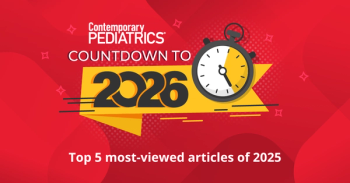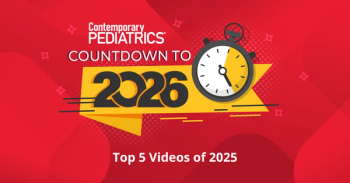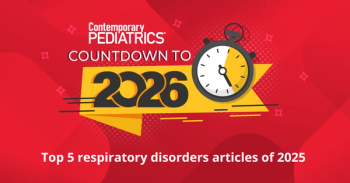What you need to know:
- The FDA issued a complete response letter to PTC Therapeutics for vatiquinone, citing insufficient evidence of efficacy, preventing approval as the first pediatric therapy for Friedreich’s ataxia (FA).
- The decision was based on results from the phase 3 MOVE-FA trial, which showed numerical but not statistically significant improvement in the primary endpoint, though secondary measures suggested potential benefits.
- PTC plans to engage with the FDA to discuss next steps.
Citing that substantial evidence of efficacy was not demonstrated, the FDA has issued a complete response letter (CRL) for PTC Therapeutics' Friedreich ataxia (FA) candidate, vatiquinone. The CRL was issued on the therapy's target action date of August 19, 2025. If it had been approved, vatiquinone—a small-molecule, first-in-class selective inhibitor of 15-lipoxygenase (15-LO)—would have become the second therapy approved for patients with FA, behind Biogen's omaveloxolone (approved for ages 16 years and older).1-3
Data that led to NDA for vatiquinone
The new drug application for vatiquinone was based on findings from the placebo-controlled MOVE-FA study, along with data from 2 long-term studies involving both pediatric and adult FA patients.2
The MOVE-FA trial, a global phase 3 study (NCT04577352), enrolled 143 patients aged 7 years and older with FA , with a modified FA Rating Scale (mFARS) score between 20 and 70, and the ability to ambulate at least 10 ft in 1 minute with or without assistance. The primary end point measured the placebo-corrected change from baseline in mFARS at 72 weeks. The intent-to-treat (ITT) population had a mean age of 18.7 years, while the modified ITT (mITT) population, consisting of 123 subjects aged 7 to 21 years, had a mean age of 14.6.
Results from the mITT population showed a –1.61 (P = 0.144) change in mFARS at 72 weeks relative to placebo. A consistent vatiquinone treatment benefit was observed across primary, secondary, and exploratory end points. Notably, nominally significant benefits were recorded in the Upright Stability subscale (USS) of mFARS (-1.26 [P = 0.021]), a key metric for disease progression in younger, ambulatory patients with FA , and the Modified Fatigue Impact Scale (MFIS), -5.05 (P = 0.025). Vatiquinone was well tolerated, with no difference in treatment-related adverse events between treatment and placebo groups.
"We are of course disappointed by the FDA's decision to not approve vatiquinone," said Matthew B. Klein, MD, chief executive officer of PTC Therapeutics, in a press release. "We believe the data collected to date demonstrate that vatiquinone could provide a safe and effective therapy for both children and adults living with Friedreich ataxia. We plan to meet with the FDA to discuss potential steps to address the issues raised in the CRL."1
More on Friedreich ataxia
According to PTC, FA is a rare, physically debilitating, life-shortening, neuromuscular disorder that mainly affects the central nervous system and the heart, and is the most common hereditary ataxia. The disorder is usually caused by a single genetic defect in the frataxin (FXN) gene that leads to reduced production of frataxin, a mitochondrial protein that is important for cellular metabolism and energy production. Globally, FA impacts approximately 25,000 people.
Other recent Friedreich ataxia pipeline news
On June 18, Biogen announced the dosing of participants in the BRAVE study (NCT06953583), a global phase 3 clinical trial evaluating omaveloxolone (Skyclarys) in children aged 2 to younger than 16 years with Friedreich ataxia (FA).4
In approximately 255 children living with FA, the BRAVE trial will evaluate the efficacy, safety, pharmacokinetics, and pharmacodynamics of once-daily oral omaveloxolone. Participants will be randomly assigned 2:1 to receive either once-daily omaveloxolone or placebo for 52 weeks before entering an open-label extension period lasting up to week 104. The primary efficacy outcome will measure change in Upright Stability Score (USS), a validated subscale of the modified Friedreich Ataxia Rating Scale (mFARS).
Click here for more information on omaveloxolone.
Want more from Contemporary Pediatrics? Consider subscribing to our free eNewsletter. Click here for more.
References
- PTC Therapeutics receives complete response letter for vatiquinone NDA. PTC Therapeutics. Press release. August 19, 2025. Accessed August 19, 2025. https://www.prnewswire.com/news-releases/ptc-therapeutics-receives-complete-response-letter-for-vatiquinone-nda-302533332.html
- Ebert M. FDA accepts new drug application for vatiquinone to treat Friedreich's ataxia. Contemporary Pediatrics. February 19, 2025. Accessed August 15, 2025. https://www.contemporarypediatrics.com/view/fda-accepts-new-drug-application-for-vatiquinone-to-treat-friedreich-s-ataxia
- SKYCLARYS (omaveloxolone) capsules, for oral use Initial US Approval: 2023. Prescribing information. Biogen. Accessed August 19, 2025. https://www.biogencdn.com/us/sky/prescribing-information.pdf
- Fitch J. Phase 3 trial of omaveloxolone to treat Friedreich ataxia in children aged 2 to <16 begins. Contemporary Pediatrics. June 18, 2025. August 19, 2025. https://www.contemporarypediatrics.com/view/phase-3-trial-of-omaveloxolone-to-treat-friedreich-ataxia-in-children-aged-2-to-16-begins









